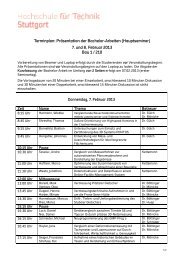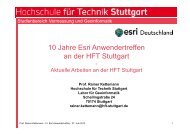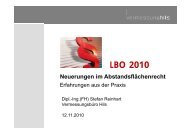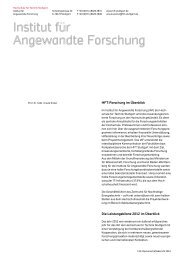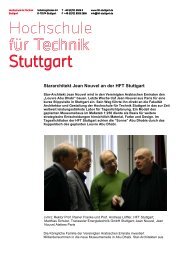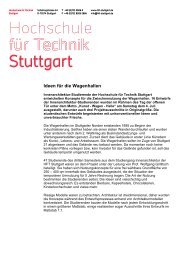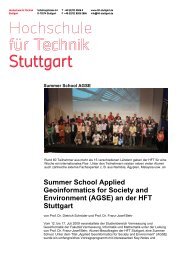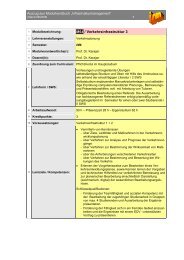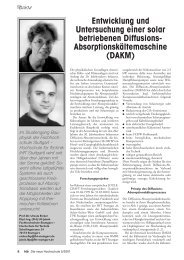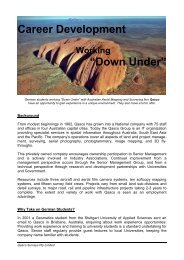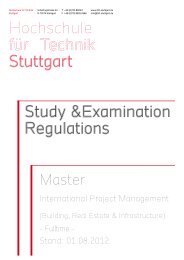greenland climate network (gc-net) - HFT Stuttgart
greenland climate network (gc-net) - HFT Stuttgart
greenland climate network (gc-net) - HFT Stuttgart
You also want an ePaper? Increase the reach of your titles
YUMPU automatically turns print PDFs into web optimized ePapers that Google loves.
NASA Greenland Progress Report 2<br />
1.1 Summary of Highlights<br />
1. Activities<br />
Greenland Climate <strong><strong>net</strong>work</strong> (GC-Net)<br />
• Ten AWS sites have been visited and serviced in spring 2004: ETH/CU, CP1, JAR1,<br />
JAR2, JAR3, DYE-2, Saddle, NASA-SE, Petermann, Petermann ELA(Fig. 1.1).<br />
• Quality control (QC) procedures have been refined and applied to all data, including data<br />
collected during the 2003 field campaign.<br />
• The satellite transmitted AWS raw data can now be processed and quality controlled with<br />
IDL programs on Window 2000/XP computers.<br />
• Results supported by this grant have been published in 15 peer-reviewed publications and<br />
32 peer-reviewed publications made use of the GC-Net AWS data.<br />
Applications and Results<br />
• The mean annual temperature at Swiss Camp is -11.9° C over the ten-year time period<br />
1991-2004.<br />
• Summer month with above freezing mean temperatures occurred in 1995, and from<br />
1997– 2004.<br />
• The largest monthly mean <strong>net</strong> radiation At Swiss Camp was found in summer 1995 (> 40<br />
W m -2 ) over the twelve-year time period 1993-2004, coincident with the time period with<br />
minimum.<br />
• The diurnal cycle of <strong>net</strong> radiation ranges between –80 W m -2 to 130 W m -2 for cloud-free<br />
days.<br />
• The twelve-year annual mean <strong>net</strong> radiation value –13.9 W m -2 , and for the winter month<br />
November – February a negative mean flux density of –26.4 W m -2 was recorded.<br />
• The annual mean temperature increased at Swiss Camp from -14.7º C (1991) to -10.8º<br />
(2003), mean spring temperatures increased from -17.2º C to -13.6º C, and fall temperatures<br />
show a similar trend from -13.8º C to -10.3º C for the 1991 to 2004 record.<br />
• The largest increase of 6º C was observed for mean winter temperatures, ranging from -<br />
25.3º C (1991) to -19.3º C (2003).<br />
• The melt extent, defined as the area of the ice sheet that melted at least once during the<br />
melt season was nearly 690,000 km 2 in 2002 as compared with an average melt extent of<br />
455,000 km 2 from 1979-2003.<br />
• We find accelerated melting rates and differing strain rates at Swiss-Camp between 2002<br />
and 2004, compared to the long-term trend.<br />
• The equilibrium line originally was situated in altitude of Swiss-Camp, but now is shifted<br />
to higher areas.<br />
• The following IDL/ENVI software tools have been created for the analysis of ground<br />
pe<strong>net</strong>rating radar (GPR) profile measurements: (1) automatic gain control, (2) DC removal,<br />
(3) subtract mean trace, and (4) time/depth varying gain.




